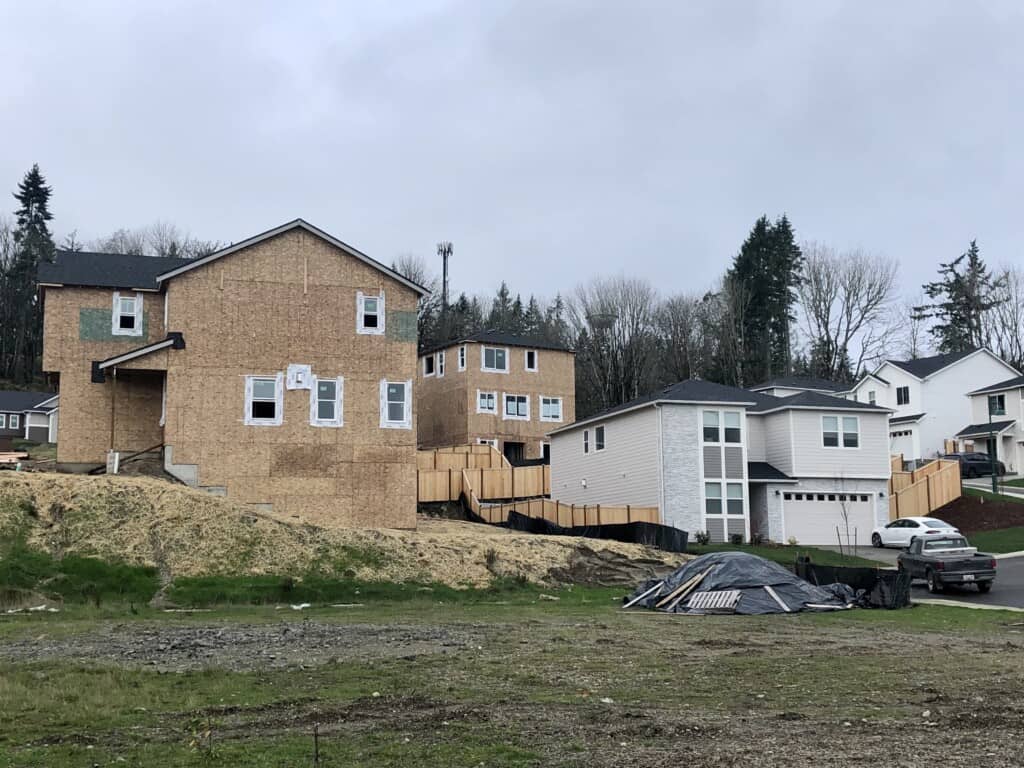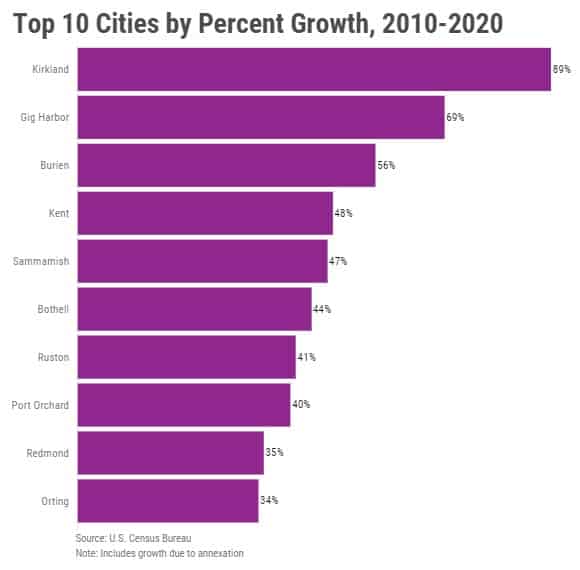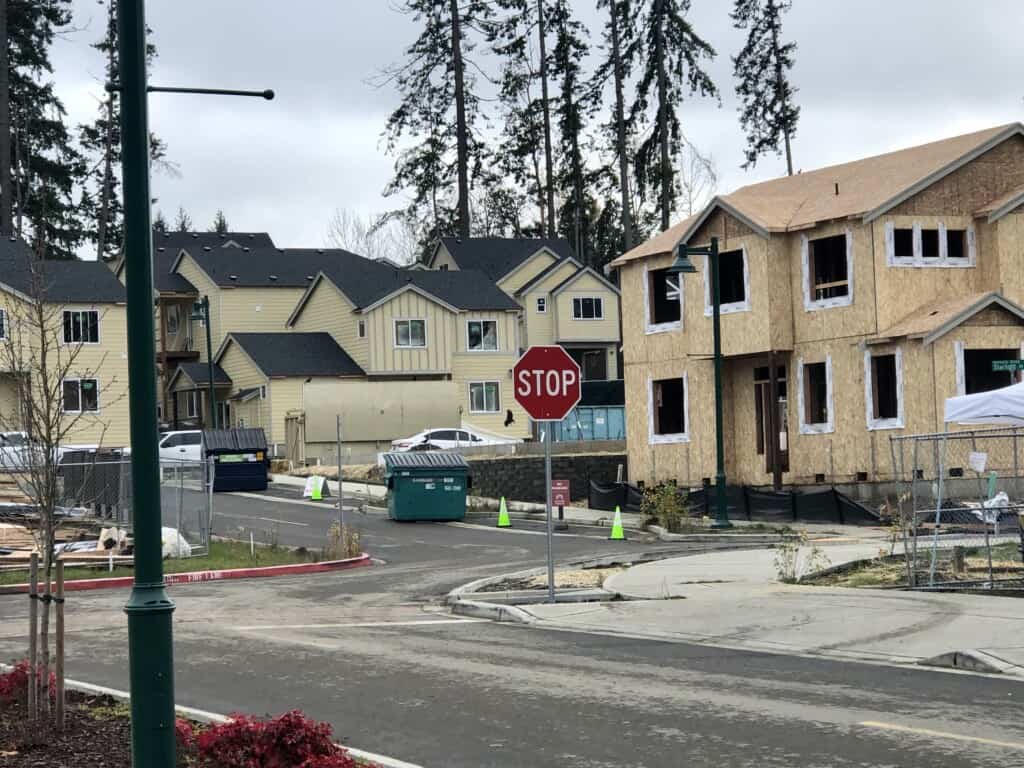Community
Census: Gig Harbor population boomed during past decade
If the once-per-decade U.S. Census is a statistical mirror for counties, cities and other places to hold up and see how they’ve changed, city of Gig Harbor residents can be forgiven if they look into the numbers emerging from the 2020 census and say, “Who’s that?”
Community Sponsor
Community stories are made possible in part by Peninsula Light Co, a proud sponsor of Gig Harbor Now.
There’s population growth, and then there’s record-setting influxes like Gig Harbor experienced. The city grew by 69% over the 10-year period, adding 4,903 people to end with 12,029 residents. Even in the fastest-growing region (central Puget Sound) in a state that is itself no slouch at growth (Washington grew by 14.6% in the same period), that’s an astonishing increase.

Gig Harbor grew primarily due to people moving into Gig Harbor North along the Borgen Boulevard corridor. Ed Friedrich / Gig Harbor Now
The Puget Sound Regional Council, the metropolitan planning body for King, Pierce Kitsap and Snohomish counties, recently ranked Gig Harbor second only to Kirkland in percentage growth among cities in its coverage area, based on data from the 2020 census.
And while only Kirkland topped Gig Harbor on this list, it did so largely via annexation, taking in 32,000 residents in a single bite in 2011 that nearly doubled its size. In contrast, Gig Harbor gained almost no population this way. The approximately 200 acres it annexed during the census period contained a “very nominal” number of residents, said principal planner Carl de Simas.
Instead, Gig Harbor grew due to people moving in, especially into Gig Harbor North along the Borgen Boulevard corridor, de Simas said. In that area, the Harbor Hill complex with single-family homes, the Heron’s Key retirement facility and Bracera Apartments added almost 1,000 housing units and drew some 2,200 new residents, and the Harbor Crossing and The Ridge at Gig Harbor developments contributed significantly to this growth.
“We did overshoot our growth target,” de Simas said. In fact, the city had estimated that it would grow to 10,500 residents by 2030, he said.

Only Kirkland grew at a greater rate, and that was because of a huge annexation. Courtesy of Puget Sound Regional Council
De Simas said that in addition to Gig Harbor’s popularity as a place to put down roots — “We live in a very desirable place,” he notes — several unique factors combined to drive the city’s unusually high growth rate between 2010 and 2020. During the recession that began in 2008, many developers halted their projects and the state Legislature extended the vesting period for development, essentially allowing projects to hibernate until conditions improved. That meant that when the economy began to recover, many projects at various stages of permitting already existed in the development pipeline.
“There were a lot of subdivisions that fell under that,” de Simas said.
But as the decade’s building boom progressed, so did a wish in many quarters to apply the brakes. City Council Member Jeni Woock attributes her 2017 election to office — and that of four additional new Council members and a new mayor — to their call to slow down development, reduce density and give infrastructure a chance to catch up. The group cut its teeth opposing a proposed 10-building residential development downtown at the corner of Soundview and Harborview drives.
In 2018, with new city leaders favoring development restrictions taking office, and many of the holdover projects from the prior decade having run their course, the population boom’s days were numbered. That February, the City Council voted into place a six-month moratorium on new residential development applications. During this pause, the city enacted more permanent obstacles, such as doing away with “bonus density allowances” that allowed developers to pack more residences into a given area in exchange for providing amenities such as open space.

Gig Harbor officials say they expect to add just 1,000 dwelling units and 2,200 people during the next 20 years. Ed Friedrich / Gig Harbor Now
Projects that were in the permitting process before the moratorium were allowed to proceed.
“I think we are seeing the end” of construction on approximately 1,200 new units dating back to that period, Woock said.
Now Gig Harbor is struggling to address issues brought on by the prior decade’s record growth, particularly traffic congestion in areas like Borgen Boulevard that were at the epicenter of the building boom, she said.
Given the less development-friendly laws and leaders now in place, as well as the unusual conditions — namely projects held over from the Great Recession coming to life again as the economy revved up — fueling the earlier boom, it seems unlikely the population will grow at a similar pace in the coming decade.
De Simas, the planner, notes that, “We’re coming into a period where we’re going to be updating our comprehensive plan.” The process includes extensive outreach to ask residents, “Has the growth become so painful that we don’t want to grow any more, or are we comfortable” seeing more growth? The city is gearing up now to get started with some of the update next year, but the bulk of the work will happen in 2023, and the updated plan is due in June 2024, de Simas said.
In the meantime, city officials appear to think their residents prefer the course of slower growth. In late October, the city was asked to share population and housing growth targets with Pierce County, to coordinate planning. Gig Harbor responded that it expects to add 1,000 dwelling units and 2,200 people during the coming 20-year planning period. That’s 1,100 new residents per decade, compared the 4,903 gained between 2010 and 2020. If Gig Harbor can stick to its guns on limiting development, it will stay off the fastest-growing cities lists borne out of the 2030 census.

